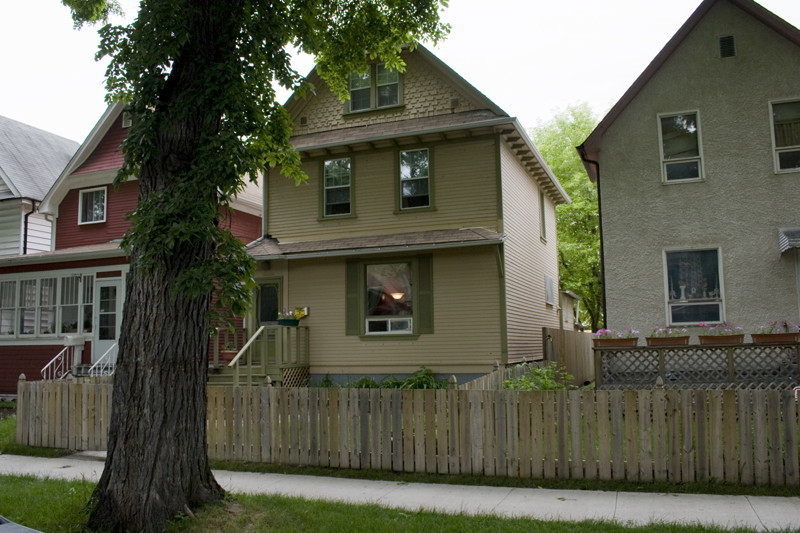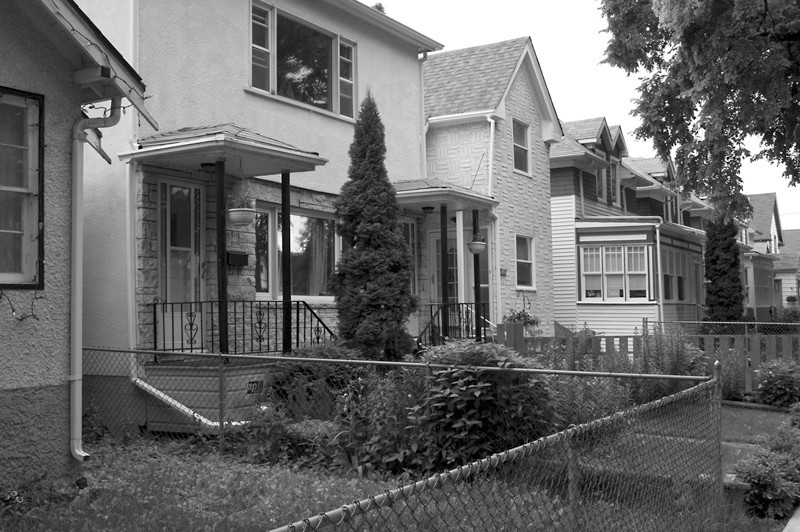The cost of revitalizing the West End
Neighbourhood’s housing prices skyrocketing, rental vacancy rates plummeting
More than a decade ago, few would have guessed snapping up a home in the West End or Wolseley would turn out to be one of the best investments a person could make.
But since 2000, house prices in the West End have jumped by 361 per cent, according to Winnipeg Real Estate Board statistics.
And while it’s enough to start flashing new dollar signs in the eyes of home and business owners, some are concerned the rising prices might be pushing the area towards gentrification.
In 2000, the average price for a home east of Arlington Street and around the University of Winnipeg was $28,500. Today, homes are selling for $121,500.
The average home west of Arlington and towards Polo Park was $54,000. They’ve more than tripled to $176,700.
Even a house in Wolseley was, on average, $56,000. Houses are now selling for close to $161,000.
Natural inflation aside, community leaders say a concentrated effort over the last 10 years to improve housing stock in the West End has a lot to do with it.
Organizations like Housing Opportunity Partnership (HOP) and Lazarus Housing have fixed up derelict and abandoned houses and put homeowners committed to the West End back in them.
“You need home ownership as a base to build on for community revitalization,” said Peter Squire, public affairs director for the Winnipeg Real Estate Board and an organizer with HOP. “Prices were in free fall mode. Something had to be done to reverse that decline.”
HOP alone has flipped some 80 homes in the area since 1999. Lazarus Housing, an initiative led by the late Rev. Harry Lehotsky, has renovated 26 homes and more than 100 rental units.
Add on top of that some 50 new infill houses that have sprung up, going beyond Spence and to Arlington.
What has followed has been a litany of beautification and housing grants from organizations like the Spence Neighbourhood Association, the West End BIZ and the Daniel McIntyre/St. Matthews Community Association.
All receive funding from the city and province to give out grants for external renovations to rental properties and home and business owners.
Naturally, the area is seeing new commercial growth as businesses follow new money as higher-income families move into the traditionally lower-income neighbourhood.
It’s not to say the West End hasn’t lost major businesses – it has (most notably Safeway in December 2008).
But some see a silver lining when companies like Cambrian Credit Union, Winnipeg’s third-largest credit union with about $2.2 billion in assets, recently moved into a new 4,000-square-foot building at the corner of Ellice and Wall Street.
“ We want to have mixed-income housing; we’re not out to displace people.
Don Miedema, housing co-ordinator, Spence Neighborhood Association
“They decided they wanted to stay,” said Gloria Cardwell-Hoeppner, executive director of the West End BIZ. “Anytime people make an investment like that, it tells you what they think of the area and that it’s worth investing in it.”
However, some lower-income residents are struggling to keep up pace, and might be on the verge of being squeezed out.
While housing prices are skyrocketing, rental vacancy rates are plummeting and Manitoba’s minimum wage is still only crawling along.
“Ultimately, it’s not a surprise that property values have been escalating considering all the money that government has put into the West End” through funding community organizations, said Don Miedema, housing co-ordinator at the Spence Neighborhood Association.
“(But) there are a number that have talked about appealing their property tax assessments,” he added. “Their taxes have increased – in some cases doubled.”
Miedema said it is starting to push away those who had previously come to rely on lower housing prices in the West End.
“It’s a crisis level in the city when you have less than one per cent vacancy rate,” he said. “When property taxes go up, the price of rooming houses go up, and it contributes to making it difficult for the lower-end client to retain a room.”
It is unlikely that the neighbourhood will have much time, if any, to catch up, as organizations push more housing renewal over the next few years.
“There’s still more work to be done,” Squire said. “There are still boarded up houses that need to be removed.”
Miedema added that organizations aren’t out to gentrify the area.
“We want to have mixed-income housing; we’re not out to displace people,” he said.
“We are out to improve the neighbourhood and expand the amount of living space available. We would like to do improvement across the board and that will mean some higher income people coming in here.”
Squire cautioned that while the West End isn’t as affordable as it used to be, it’s still lagging compared to the rest of the city.
“It’s still half of the selling price of the average home around Winnipeg,” he said.
With files from Ethan Cabel
Published in Volume 65, Number 27 of The Uniter (June 29, 2011)








